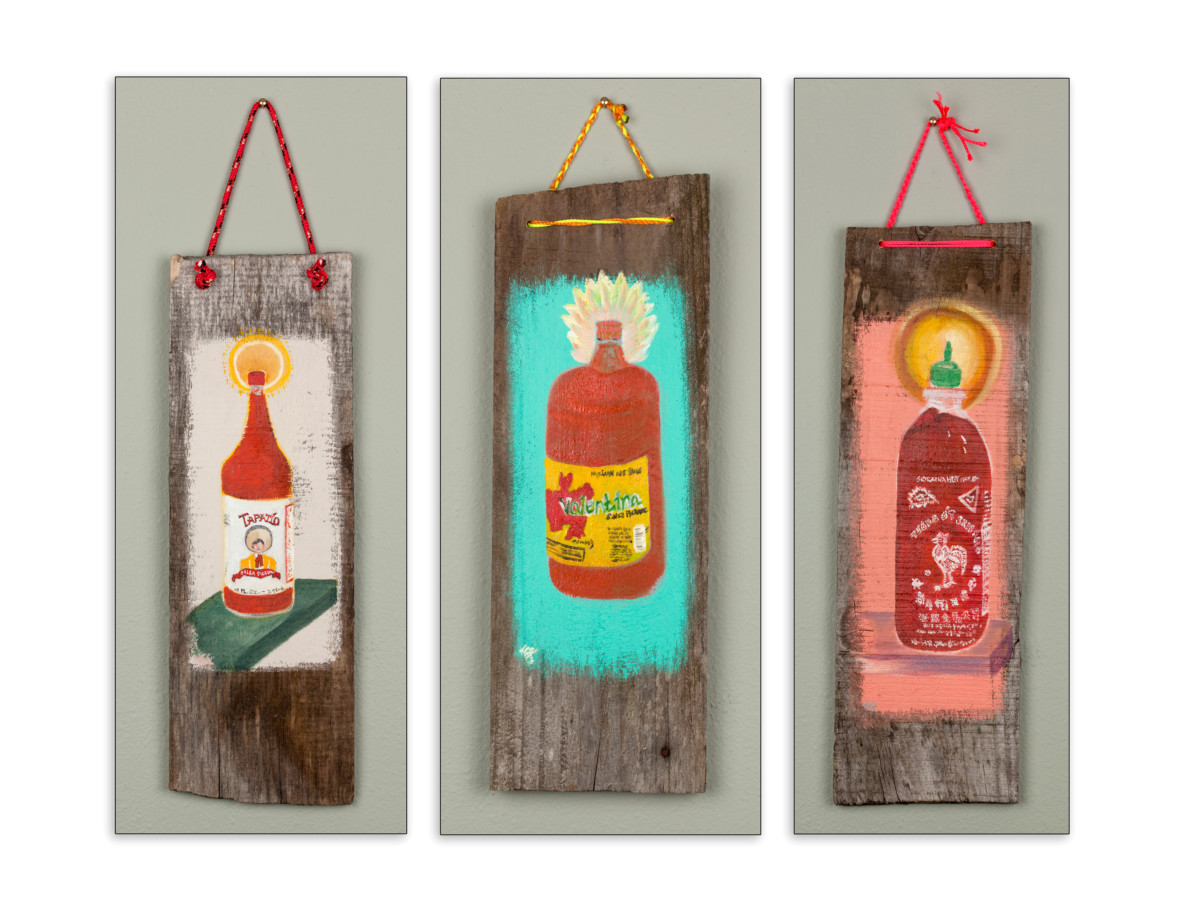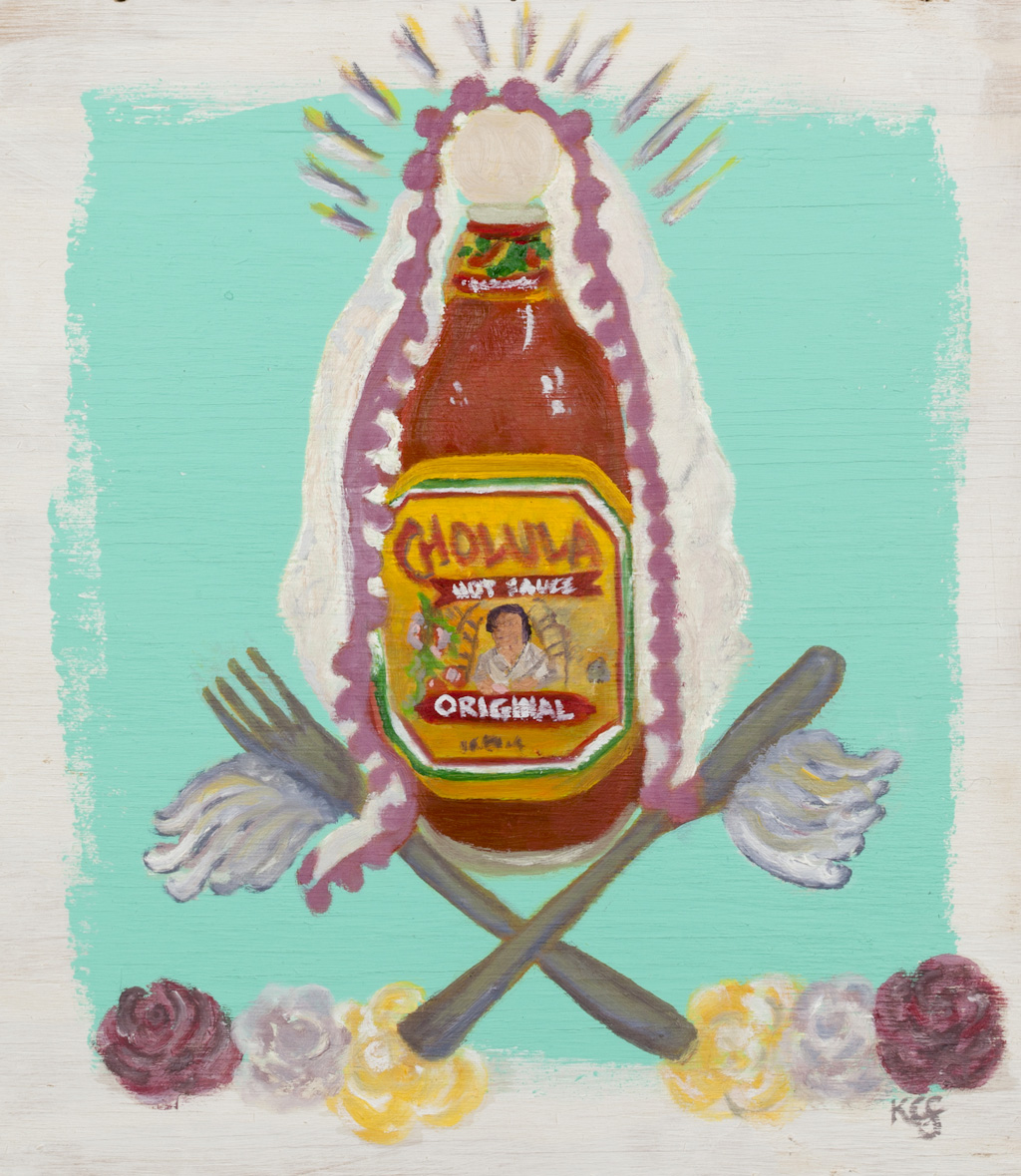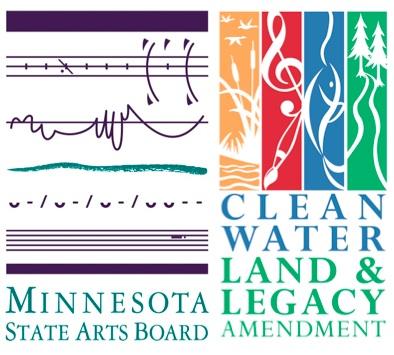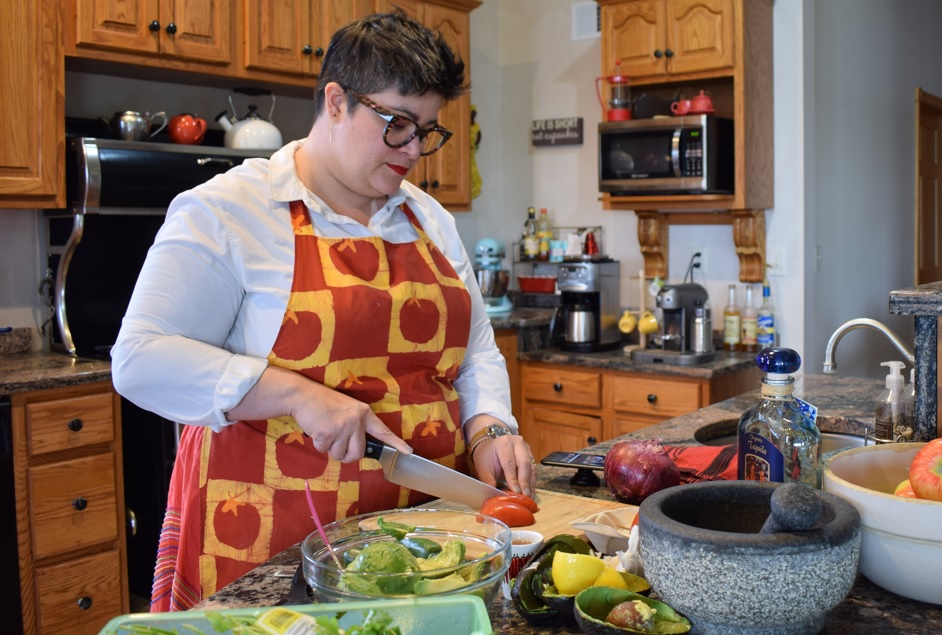April 23 – May 21, 2022
MN Artist Kandace Creel Falcón
Free & Open to All
The New York Mills Regional Cultural Center is proud to present the work of Minnesota Artist Kandace Creel Falcón in its Gallery April 23 – May 21, 2022. The Gallery is always free to see and open to all. Open Hours are Wednesdays & Thursdays 10-7, Fridays 10-5, Saturdays 10-3; other days/times by appointment (contact 218-385-3339 or info@kulcher.org).
Kandace Creel Falcón, Ph.D. is an interdisciplinary feminist scholar, writer, and visual artist. Their life’s passion grounds the power of narrative for social transformation. As a Xicanx femme feminist, KCF’s work is driven to disrupt conventional notions related to femininity and domesticity. Drawn to interdisciplinary inquiry and mixed-media methods of painting, fabric arts, and writing KCF brings together various mediums to make sense of the world around them. She lives and works in rural Erhard, MN.
A reception will be held on Friday May 20th, 2022, from 3:00 – 5:00 p.m., with an artist talk at 4:00. This event is free to attend and all are welcome. Refreshments will be available. Our gallery is always free and open to the public. We continue to observe COVID safety guidelines; please stay home if ill.
Kitchen Saints
Artist Statement
Kandace Creel Falcón
 “Kitchen Saints is a gathering of original oil paintings on found wood,* giclée prints of digitally manipulated geographic portraits and human subject portraits, acrylic painting studies from my studio practice, and a zine of collected stories of Otter Tail County Latinx food workers and community members. This multidisciplinary approach allows multiple points of entry for exploring the role of Latinx foodways in our rural communities.
“Kitchen Saints is a gathering of original oil paintings on found wood,* giclée prints of digitally manipulated geographic portraits and human subject portraits, acrylic painting studies from my studio practice, and a zine of collected stories of Otter Tail County Latinx food workers and community members. This multidisciplinary approach allows multiple points of entry for exploring the role of Latinx foodways in our rural communities.
This exhibition grows out of a grant from Rethos where I collected stories and photographs of Latinx people and places connected by food in Otter Tail County from 2020-2021. Learn more about that project here: kjcfalcon.com/latinx-foodways
This storytelling gathering was influenced by my Chicana feminist interest in domesticity, home, and belonging research that I have been writing and reflecting on since the early 2000s. Bringing these stories into conversation with a new layer of visual imagery allows for stories to reach new audiences. I’m particularly interested in unpacking how certain forms of consumption of ethnic identities becomes palatable in a broader political climate of anti-immigrant sentiment.
What can we learn when we center and listen to the stories of Latinx people in Otter Tail County about how they see food as important to them in this place?
 Painting is my primary artistic medium. This exhibition brings two collections of my work together alongside photography and writing about food to elevate ordinary objects important to me in my home that I share with my wife in rural Erhard.
Painting is my primary artistic medium. This exhibition brings two collections of my work together alongside photography and writing about food to elevate ordinary objects important to me in my home that I share with my wife in rural Erhard.
Further, the thirteen original oil paintings on found wood represent my desire to explore how I, as a queer person raised Catholic, can interrogate Western art history alongside my personal history. I salvaged wood boards from rural sites in Minnesota to allude to the history of wood altarpieces in the Catholic Church, and to honor the lineage of retablo paintings of Northern Mexico and the US Southwest.
Growing up in Albuquerque, saintly iconography was my visual home. The acrylic paintings on canvas paper are studies I conduct in my studio as warm up exercises before working larger canvases. They become sites for exploration of color, texture, and form that influence my larger works. I consider them as offerings in the form of permanent libations to my ancestors who help guide my creative practice. My focus on Mexican foods in my home provides personal healing and comfort in a world not always welcoming of difference.
My artistic practice is deeply interested in the blurring of private/public spaces. Through the various types of portraiture and narrative tales, Kitchen Saints is a way to explore the public and private considerations that we make related to our food consumption. While hot sauces (or tequila) are commodities purchased in public, they often adorn our private eating spaces. They represent convenience, our global capitalist moment in time, and perhaps most surprisingly are not simply benign ingredients. Instead, hot sauce, tequila and Mexican foods are filled with cultural meanings claimed by those whose cultures eat and enjoy spice as a part of the cuisine but also imposed upon them by broader political, cultural and social forces. Spicy food are racialized in the US and this process requires us to think about how those forces then get mapped onto people and communities.
Likewise, eating in public places like the restaurants captured in environmental portraits, or learning about the people behind the businesses serving as cultural bridges in our predominately white, rural communities, is worthy of communal inquiry. Food, primarily considered a domestic endeavor, becomes a public one through the form of restaurants and marketplaces.
All of the works are tied together by my desire for recognition, dignity, and acknowledgement of our Latinx presence in rural places enhanced by my investment in bold, vibrant color, and joyous imagery that I hope encourage deeper engagement by the viewer.”
— Artist Statement by Kandace Creel Falcón
*Material support for the creation of the thirteen oil paintings on found wood was provided by an LRAC Quick Start Grant.
Learn more about Writer/Artist/Facilitator Kandace Creel Falcón, Ph.D. online here: kjcfalcon.com
Contact the Cultural Center with any questions at 218-385-3339 or info@kulcher.org.

